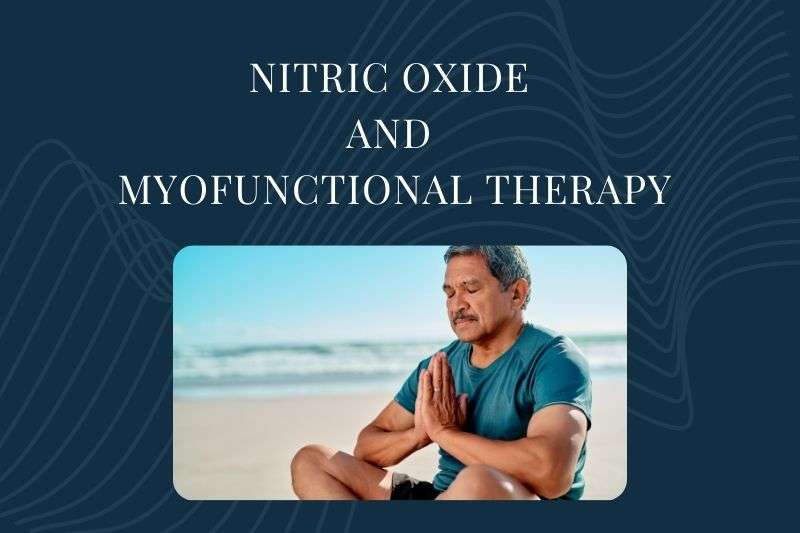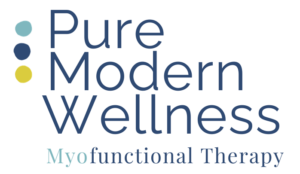

Understanding Nitric Oxide and the Benefits of Myofunctional Therapy for Nasal Breathing
Nitric oxide (NO) is a gas produced within our bodies. It functions as a messenger molecule regulating the circulation of blood, delivery of oxygen, and immune function.
How do we make Nitric Oxide (NO)?
Within the respiratory system, nasal NO originates from the paranasal sinuses and is discharged into the nasal airways when we breathe. It serves a vital bodily function in sustaining respiratory well-being by functioning as a strong vasodilator, boosting blood circulation, and enhancing oxygen absorption in the lungs. Furthermore, nasal NO exhibits antimicrobial characteristics, aiding in the elimination of pathogens and preventing infections in the respiratory system. The production of NO is notably greater during nasal inhalation than mouth breathing, underscoring the significance of correct nasal respiration for maximal NO advantages.
Within the oral cavity, oral nitrate undergoes a two-step transformation facilitated by the oral microbiome, resulting in the production of NO. Upon consuming foods rich in nitrate, such as leafy greens, the nitrate is absorbed and accumulates in saliva. Subsequently, bacteria present in the mouth convert nitrate into nitrite. After swallowing, nitrite is further converted into NO either within the acidic environment of the stomach or directly within the tissues. Mouth breathing can alter the two-step transformation of nitrate into nitrite for optimal NO production by a shift in the oral and pharyngeal microbiome diversity as a result of taking air in through the mouth, further accentuating the importance of nasal breathing.
The Role of Nitric Oxide
Nitric oxide plays a crucial role in the body with several important benefits associated with nitric oxide:
- Enhanced Oxygen Delivery: Nasal breathing increases the presence of nitric oxide in the airways, facilitating better oxygen absorption in the lungs and strengthing overall tissue oxygenation.
- Blood Pressure Regulation: Nitric oxide contributes to vasodilation, which widens blood vessels, lowers blood pressure, and promotes improved blood circulation.
- Immune Defense: With its antimicrobial properties, nitric oxide helps combat pathogens in the respiratory tract, serving as a primary defense mechanism against airborne infections.
- Improved Respiratory Function: Increased nitric oxide levels from nasal breathing support optimal gas exchange in the lungs, resulting in more efficient breathing and enhanced endurance during physical activities.
Myofunctional Therapy: Promoting Nasal Breathing and Nitric Oxide Production
Myofunctional therapy involves exercises with the orofacial muscles that improve the function of the muscles in the mouth, face, and throat. Its main goal is to correct oral posture, breathing patterns, and swallowing habits. Here’s how myofunctional therapy can enhance nasal breathing and boost nitric oxide production:
- Correcting Breathing Patterns: Myofunctional therapy encourages nasal breathing by retraining individuals to use their nose for breathing instead of the mouth. This correction helps to increase the production of nitric oxide, which has various health advantages according to European Respiratory Scientific Journal.
- Strengthening Oral Muscles: Myofunctional therapy works to strengthen the muscles involved in maintaining an open airway during both sleep and wakefulness. By doing so, it reduces the likelihood of mouth breathing and related conditions such as sleep apnea.
- Improving Sleep Quality: By promoting nasal breathing, myofunctional therapy can enhance sleep quality. Nasal breathing decreases the risk of snoring and obstructive sleep apnea which are often associated with mouth breathing.
- Enhancing Overall Health: Consistently practicing nasal breathing with the support of myofunctional therapy leads to better oxygenation, lower blood pressure, and an improved immune response. These factors contribute to overall health and well-being.
Practical Tips for Incorporating Myofunctional Therapy
Consider incorporating these simple habit changes into your daily routine that are foundational to myofunctional therapy:
- Nasal Breathing Exercises: Focus on deep breathing through your nose, taking slow and controlled inhalations and exhalations.
- Tongue Positioning: Keep the entire tongue resting against the roof of your mouth starting just behind your front teeth. This position helps keep the airway open and promotes nasal breathing.
- Swallowing Techniques: Practice proper swallowing techniques without using your facial muscles. You can do this by taking a small amount of water in your mouth, keeping your lips closed, and swallowing while your tongue is against the roof of your mouth.
- Chewing Exercises: Strengthen the muscles involved in proper breathing and swallowing by chewing gum or eating fibrous foods that require more chewing effort.
If you can not achieve these tips, seeking help from a myofunctional therapist may be beneficial
Summary
To summarize, nitric oxide is a potent compound that may provide various health advantages especially when generated through nasal respiration. Myofunctional therapy presents a holistic and efficient approach to enhance nasal breathing, consequently amplifying nitric oxide production and enhancing overall well-being. By integrating myofunctional therapy into your daily regimen, you can foster habits to improve breathing patterns and reap the extensive benefits of nitric oxide.
Resource Studies:
- Nasal nitric oxide in man
- Nasal and oral contribution to inhaled and exhales nitric oxide: a study in tracheotomized patients
- Nose vs. mouth breathing – acute effect of different breathing regimens on muscular endurance
- Analysis of oral microbiota in patients with obstructive sleep apnea – associated hypertension
- Dysbiosis of the salivary microbiome is associated with hypertension and correlated with metabolic syndrome biomarkers
- Alterations in Oral-Nasal-Pharyngeal Microbiota and salivary proteins in mouth-breathing children
- Exploring the interplay between oral diseases, microbiome, and chronic diseases driven by metabolic dysfunction in children
Resource Books:
- Functional Nitric Oxide Nutrition, Dietary Strategies to Prevent and Treat Chronic Disease by Nathan Bryan
- Dr. NO, The Discovery That Led to A Nobel Prize & Viagra by Louis Ignarro


